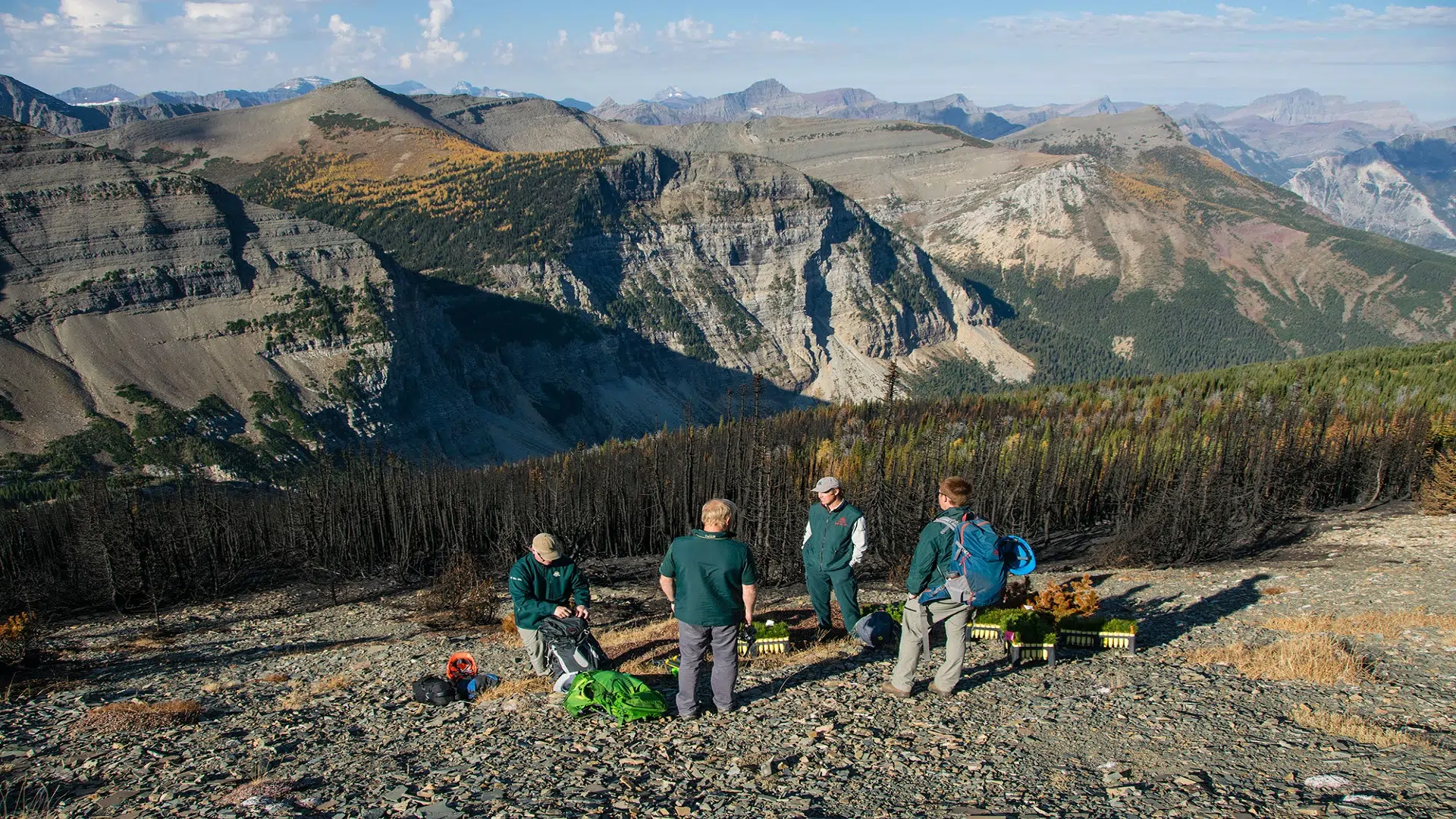
Parks Canada staff commit to protection of endangered tree
WATERTON – The endangered whitebark pine tree is getting a leg up from Parks Canada.
It’s a five-needle species that can grow up to 20-metres tall and live for nearly 500 years.
“They inhabit the upper level of the alpine, the sub-alpine region. The seed they produce is highly nutritious. It is eaten by a number of wildlife, primarily grizzly bears, black bears, squirrels and the Clark’s nutcracker bird,” explained Robert Sissons, ecologist team leader for restoration and vegetation management in Waterton Lakes National Park.
According to Sissons, the Clark’s nutcracker is the only bird that can crack open the tree’s cones. It then stores the seeds in the ground, but often forgets where, which leads to new trees naturally sprouting.
However, the whitebark pine was listed as “endangered” under the Species at Risk Act (SARA) in 2010. It’s largely threatened by the white pine blister rust pathogen, mountain pine beetle, fire suppression and climate change. Between 80 and 90-per cent of the trees are infected by the pathogen.
Since then, Parks Canada has made an effort to protect seed-producing trees that demonstrate a resistance to blister rust. They enhance regeneration by planting stock from those seeds, and even inoculate some of the young trees with a fungus called “Siberian slippery jack” that helps them obtain nutrients.
The organization has also worked with Glacier National Park in Montana over the past seven years to grow nearly 6000 of the whitebark seedlings.
Over this fall, 13 Parks Canada employees from Waterton Lakes National Park helped plant 1000 of the rust-resistant seedlings in an area of Sofa Mountain that was burned under a prescribed fire earlier in the year. The fire removes competing vegetation, while also creating a nutrient-rich habitat that improves the tree’s chance of survival.
“We mark where all those plantings are, and we go back every year for the first three or five years to double check all those seedlings and see how many have survived,” said Sissons.
“Beyond the planting and monitoring, we don’t help them out anything beyond that. We don’t go in and water them every year. They’re on their own… For the most part, they do survive.”
The initial work for this type of planting started in Waterton about five years ago, but has since expanded to other mountain national parks all the way up to Jasper, he went on to explain.
Sissons says the next step is to shift the seedling storage and growing away from Montana, moving it to an operation near Smoky Lake. He would also like to see the program expanded to plant 5000 trees per year to maximize its conservation potential.


